Articles By Our Members
Updating Spektrum DX6 Radio with OrangeRX DIY Transmitter Module
by Pat Suwalski, April 2015
I like my first-generation Spektrum DX6 transmitter. While it's coming up
to ten years of age, for my boat hobby, it does everything I need it to do.
Sure, it doesn't have a fancy dot matrix screen or the latest in transmitter
technology, but it works. Even with radios like the very affordable OrangeRX,
I cannot justify replacing this trusty transmitter.
The decision to replace became even more difficult, since a few years ago I
did the following:
- Upgraded battery pack to Turnigy 3-cell LiPo
- Upgraded power regulator to much more efficient unit from Dimension
Engineering
- Streamlined by moving the antenna inside the housing
- Purchased several more DSM1 AR6000 receivers
Still, I wanted to be able to take advantage of the very cheap and
readily-available OrangeRX receiver modules. With new projects for this
summer, it became clear that I will need radio equipment for an upcoming boat,
and I'm clean out of AR6000s.
There were three options:
- Purchase OrangeRX transmitter (~$90)
- Purchase more AR6000 modules on eBay ($30-$70 each)
- Attempt to fit a JR-compatible OrangeRX module into my radio ($30)
That last one seemed very appealing to me. However, upon researching it, it
became clear that it might be tricky. There were anecdotal reports that people
had tried it and the signal levels weren't quite right, and that perhaps the
pulse signal was altogether inverted. Rather strange, when one considers that
the original Spektrum radio was basically a rebranded JR transmitter.
I was about to give up when I found that OrangeRX had a "DIY transmitter
upgrade" product on their site:
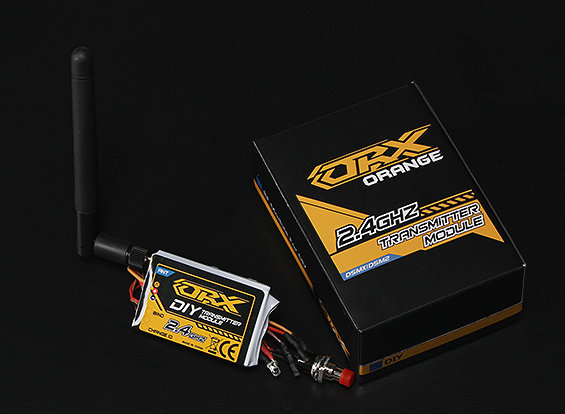
Costing right around $30, it promised to be compatible with pretty much
every radio. It claimed to have the smarts to determine signal levels at
startup and match itself to whatever comes its way. Brilliant! There were
reports in the comments that some people had even managed to convert their
1980s-vintage radios to DSM2/DSMX. This was it, the product that would solve
my transmitter inadequacies. It was ordered promptly and came relatively
quickly.
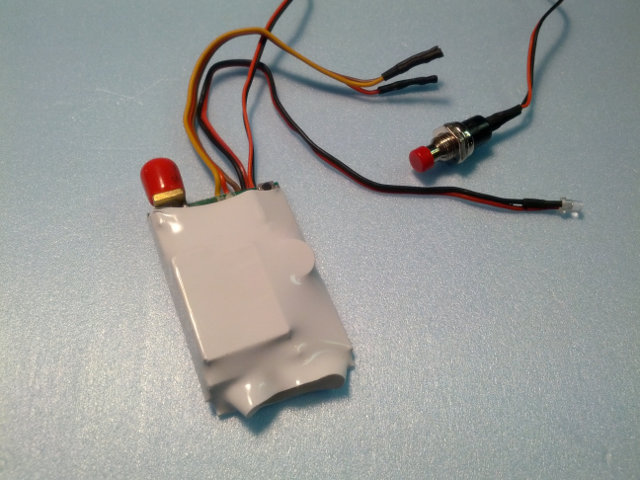
Even without a plug-and-play module housing, the unit is simple to work
with. It has an antenna jack (and comes with a pigtail so the antenna can
reach anywhere), a status LED, a bind button, and leads for positive, ground,
and PPM signal. Simple.
But it would be a shame if all of my AR6000 DSM modules just became useless
after this upgrade. And besides, this was a really hacked-up radio anyway.
Would it make sense, and would it even be feasible, for my transmitter to have
two radio modules in it?
As it turns out, the answer it that it would be very feasible. I could even
potentially reuse the bind button so that there is just a single shared one
between the two modules, and maybe the LED as well.
A quick test proved the new module worked with my radio. Another quick test
after that showed that by keeping ground and PPM common, but switching the
positive lead, I could choose which module was active; it even worked at
runtime without turning off the radio! Could the bind button and LED be as
easy?
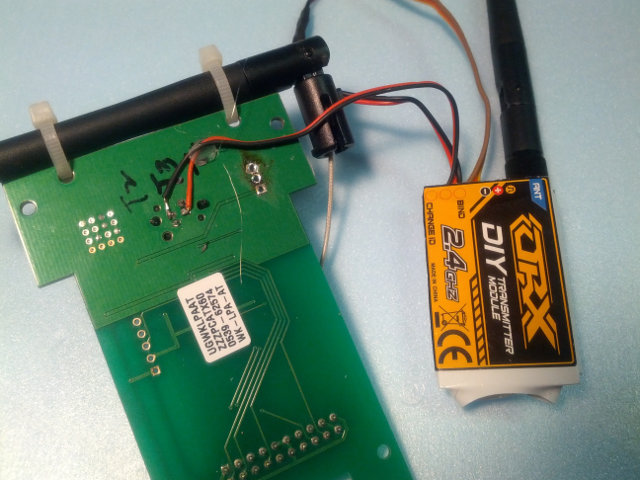
With the supplied bind button chopped off and the old one linked in as per
the photo, it worked great. Depending on which module was powered up, it
worked as expected.
The LED proved more tricky. It would appear that there are differences in
the pull-up resistor arrangement, and the LED performs very poorly if both
units are hooked up simultaneously. While it was a shame, the simple
alternative was to attach the provided LED to the clear bind button as a
second light. It is certainly much brighter than the original LED and would be
visible, even patched in at the side of the button.
With everything working, I planned out the position of the new module in
the case. The previous modification of moving the original antenna inside the
case at a horizontal orientation has worked flawlessly, so the new one would
get similar treatment. The new module was attached to the old module with
two-sided mounting tape. Here is the final configuration:
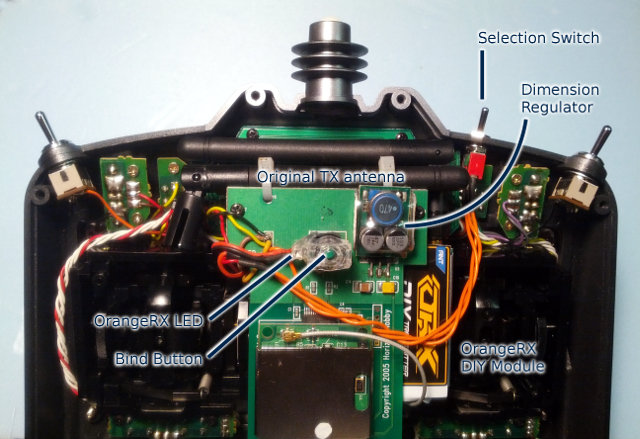
As you can see, a switch was added to the case for easy selection of
transmitter. Here is what it looks like from the outside:
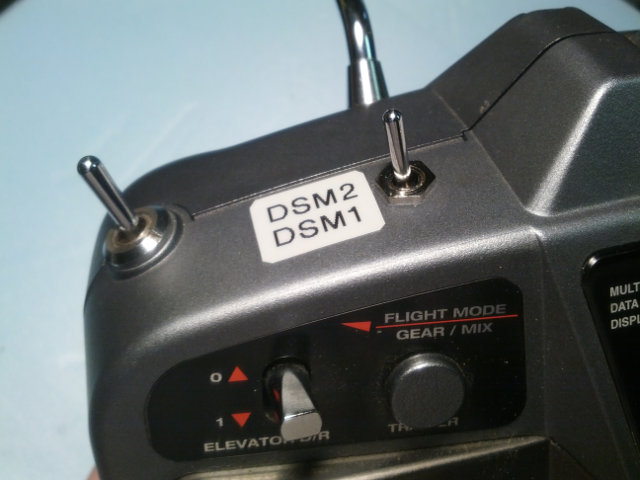
Is possible to take an old transmitter and very cheaply upgrade it to the
world's most compatible DSM-1/2/X transmitter? Yes, it is.
In a few years I may want to upgrade my transmitter. But for now, this unit
completely meets my needs.
Pat Suwalski
|


